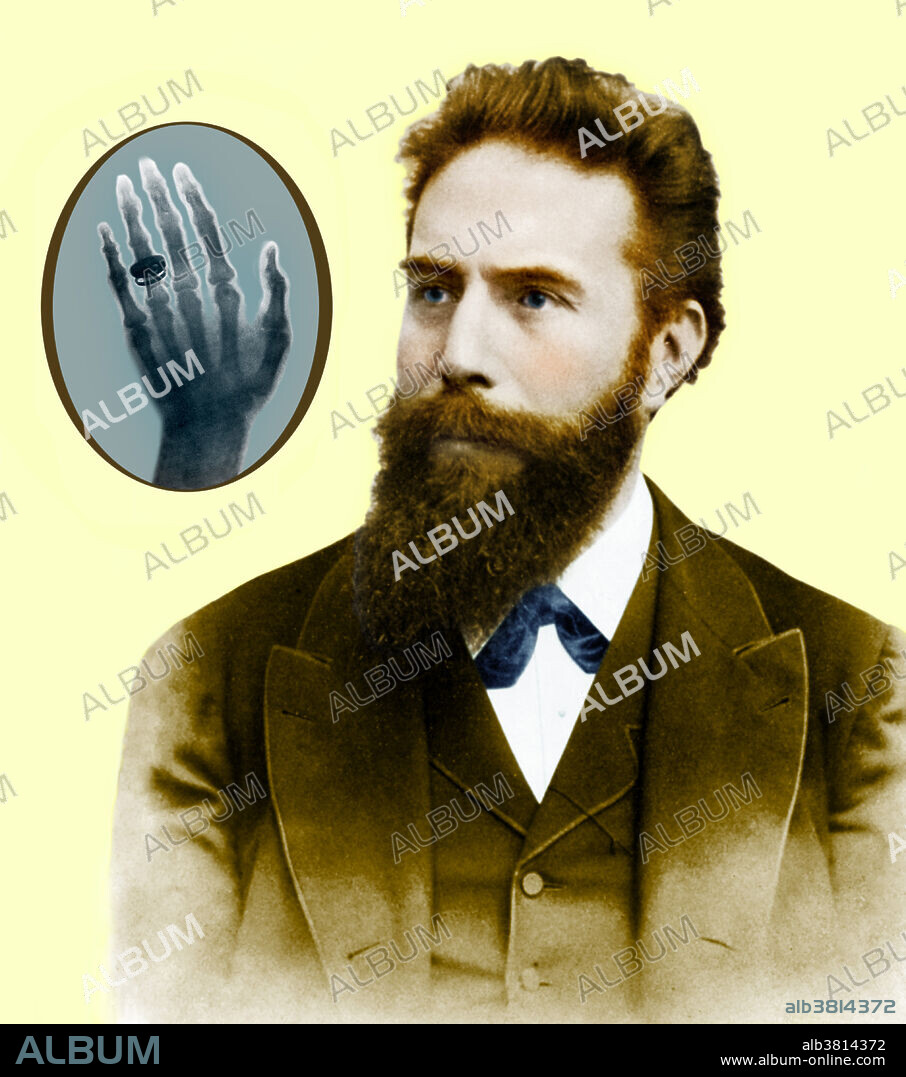alb3814372
Wilhelm Roentgen, German Physicist

|
Añadir a otro lightbox |
|
Añadir a otro lightbox |



¿Ya tienes cuenta? Iniciar sesión
¿No tienes cuenta? Regístrate
Compra esta imagen.
Selecciona el uso:

Título:
Wilhelm Roentgen, German Physicist
Descripción:
Ver traducción automática
Wilhelm Konrad Roentgen (1845-1923), German experimental physicist and discoverer of x-rays, with inset image of the first medical x-ray, an image of his wife's hand. While using a discharge tube (in which an electric discharge is passed through a gas at low pressure) in a darkened room, Roentgen noticed that a card coated with barium platinocyanide glowed when the tube was switched on. The effect was not blocked by an intervening wall, or even a thin sheet of metal. Roentgen termed this newly discovered phenomenon X-ray radiation, and suggested that it consisted of electromagnetic rays with a shorter wavelength than light. He was awarded the first Nobel Prize for Physics in 1901. Enhancement and composite of 9A8158 and BD9306.
Crédito:
Album / Science Source
Autorizaciones:
Modelo: No - Propiedad: No
¿Preguntas relacionadas con los derechos?
¿Preguntas relacionadas con los derechos?
Tamaño imagen:
4062 x 4590 px | 53.3 MB
Tamaño impresión:
34.4 x 38.9 cm | 13.5 x 15.3 in (300 dpi)
Palabras clave:
ALEMAN • ALEMANA • ALEMANES • C. • CIENTIFICO • COLOREADA • COMPUESTOS • CUARTO DE BAÑO • EQUIS • EUROPEA • EUROPEAS • EUROPEO • EUROPEOS • FAMOSA • FAMOSO • FIGURA • FÍSICA (CIENCIA) • FÍSICO (CIENTIFICO) • FOTO • FOTOGRAFIA • GANADOR • GENTE • HISTORIA • HISTORICO • HOMBRE • HOMBRES • IMPORTANTE • LAUREADO • LAVABO (WC) • LAVABO • MANO • MASCULINO • MAYOR • MEJORA • NOBEL • PERSONA • PERSONALIDAD • PERSONALIDADES • PREMIO NOBEL • PRIMERO • RAYA • RAYOS X • RETRATO DE HOMBRE • S. XIX • S. XX • SIGLO XIX • SIGLO XX • SIGLO • WILHELM • X
 Pinterest
Pinterest Twitter
Twitter Facebook
Facebook Copiar enlace
Copiar enlace Email
Email
